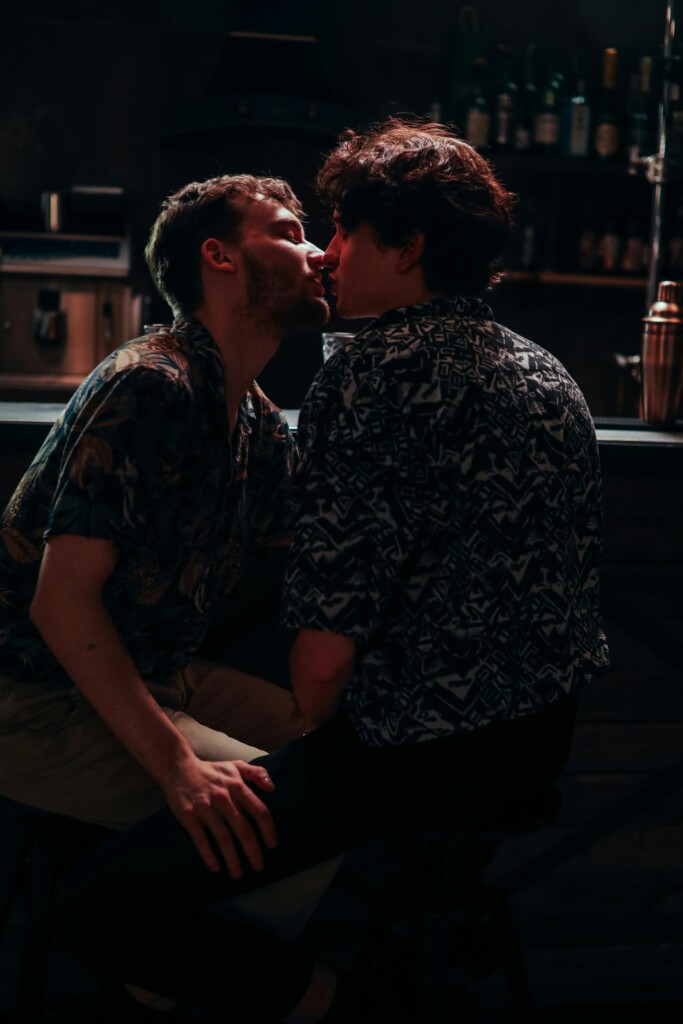When I began dating in my early teens, I quickly realised my attraction to others was based more on emotional connections and a particular energy or feeling, and it didn’t matter what the person’s gender was. I soon learnt in my 20s that identifying as Pansexual meant that I could allow my sexuality to take on whatever shape or form I desired, and this felt less restricting and way much more fluid for me. While I don’t necessarily like labels myself, don’t get me wrong, they definitely work for others; it seems the term Pansexual was the best fit for me.
While Pansexuality is much more known today, there are still so many misconceptions, the most prominent being that Pansexuality means you’re attracted to everyone and anyone, but that’s far from the truth. But really, it’s about not letting gender define who you’re attracted to. People who do identify as Pansexual may choose to specify what it means to them, and I’m pretty sure everyone has their own unique and beautiful way of describing it, and that’s what I love most about it!
What is Pansexual?
So what is it? Well, simply put, Pansexuality is a sexual orientation where a person is attracted to individuals regardless of their gender identity. This means that a pansexual person may be attracted to someone who is male, female, non-binary, genderqueer, or any other gender identity. The term “pan” comes from the Greek word “all,” highlighting the inclusivity of this orientation. Pansexuality focuses on the person as a whole without placing emphasis on gender as a determining factor in attraction. It’s important to note that Pansexuality, like all sexual orientations, exists on a spectrum and can be experienced uniquely by different people.
Pansexuality is a sexual orientation where a person is attracted to individuals regardless of their gender identity
Pansexuality vs. Bisexuality
Pansexuality and bisexuality are often confused or used interchangeably, but there are subtle differences. While both orientations involve attraction to more than one gender, bisexuality typically refers to an attraction to two or more genders. In contrast, Pansexuality emphasises attraction without gender as a central factor to attraction, be it sexual, emotional or physical. Some people who identify as bisexual might still experience attraction across a broad spectrum of genders, and it’s important to respect how individuals define their orientation. Ultimately, it’s up to the individual how they choose to identify, which may shift and change throughout their lifetime.
Ultimately, it’s up to the individual how they choose to identify, which may shift and change throughout their lifetime.
Breaking Down Common Myths About Pansexuality
There are several misconceptions surrounding Pansexuality, which can lead to misunderstandings or harmful stereotypes. Let’s break down a few of the most common:
- Myth 1: Pansexual people are attracted to “everyone.”
Pansexuality doesn’t mean that a person is attracted to every single individual they meet. Like any other orientation, attraction is based on personal preferences, chemistry, and connection—not an automatic attraction to all people.
Are you a sensual
professional?
Join hundreds of BDSM practitioners, content creators, erotic writers, artists, coaches, masseurs, muses and more on Sensuali
- Myth 2: Pansexuality is just a phase of confusion.
This myth dismisses Pansexuality as being trendy or a form of bisexuality confusion. Pansexuality is a valid and recognised sexual orientation, and it’s not a transitional phase. Individuals who identify as pansexual have a deep understanding of their attractions and how they experience connection.
- Myth 3: Pansexuality and bisexuality are the same.
As discussed earlier, while there are overlaps, Pansexuality focuses explicitly on gender being irrelevant to attraction, whereas bisexuality typically refers to an attraction to two or more genders. Both identities are distinct and valid in their own right.
Navigating Relationships as a Pansexual Person
When I came out as Pansexual, I had a lot of people approach me with confusion, the stereotypes mentioned above, and it also fired conflicting and debating arguments within romantic relationships. However, my saving grace was connecting with other pansexual individuals or other LGBTQ+ communities. Not only did they celebrate with me, but they also provided validation, support, and acceptance. So, even if you’re finding it challenging to navigate romantic relationships, just know that there is a whole community of people out there who get you, love you and will support you.
My saving grace was connecting with other pansexual individuals or other LGBTQ+ communities. Not only did they celebrate with me, but they also provided validation, support, and acceptance.
If you do find yourself lucky in love with a partner/s who gets your Pansexual sexiness, just remember communication is still vital. They may have some ideas about what Pansexuality means to them. Still, we know by now, if you’ve been taking this article in, that people may have their version or definition of what they want, need or desire sexually or emotionally within their sexuality.
TIP: Remember that sexuality can be fluid, and it’s okay if your understanding of your identity evolves over time. What matters most is being true to yourself and communicating openly with your partner(s), even if it varies week by week!
The one thing I have learned as a Pansexual woman is patience. While it can be tiring, educating others when you feel comfortable can help dismantle stereotypes and change the narrative around what Pansexuality really means. It’s okay to set boundaries, too—if a conversation feels uncomfortable or invasive, you have the right to disengage and walk away.
Want to explore you sexual identity with an expert? Book a session with a coach today Intimacy Coaching
Read more A sex coach’s guide to navigating new sexual experiences






